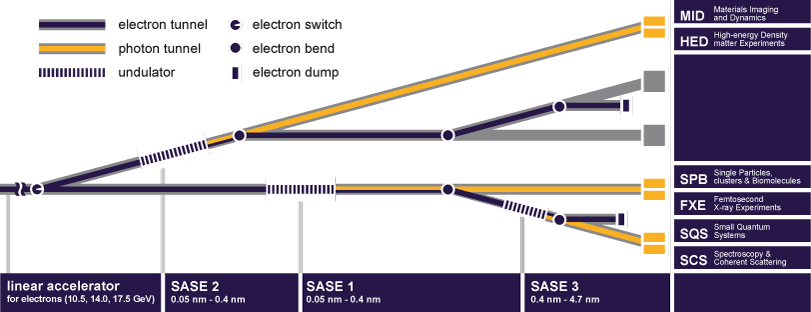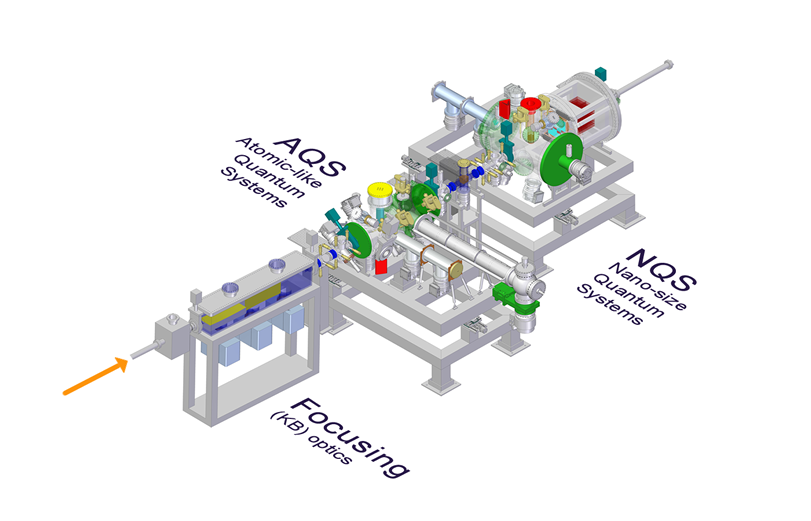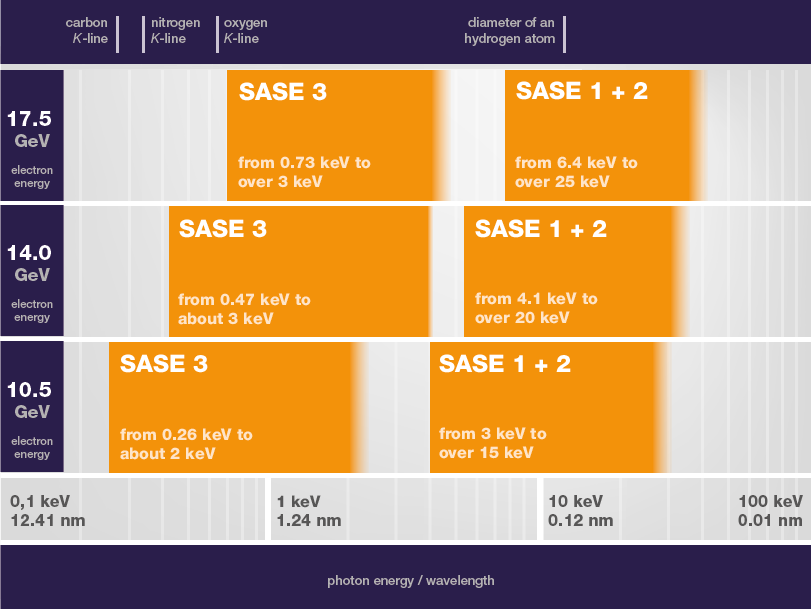Constructive destruction
The Small Quantum Systems (SQS) instrument at European XFEL will focus on atomic-like and nano-size objects—especially on breaking them to find out more about their inner workings.

It all began with light.
That is not just the case for the biblical genesis, but for quantum theory as well. Around 200 year ago, physicists discovered that our Sun's light lacks certain colours, the Fraunhofer lines. Though Joseph Fraunhofer and his contemporaries didn’t have a clue about how these dark lines came into existence, the findings finally lead to the formulation of the modern atomic model and quantum theory 100 years later.
Fraunhofer made use of an experimental technique that physicists today call spectroscopy—studying matter by investigating the colours (energies) of light that it emits. In the meantime, the term “spectroscopy” has been expanded to all kinds of energy-dependent measurements—using light, electrons, or ions.
You could think that a 200 years’ record of spectroscopy is long enough to have measured every single spectral line, at least for the smallest systems; and that in view of the current strong interest in biological systems, atomic physics would not attract a great deal of attention.
Then it is time to meet Michael Meyer.

Michael Meyer is expert of atomic and molecular physics and the leading scientist for the Small Quantum Systems (SQS) instrument at European XFEL and knows why you would be wrong: “Some people may think atomic physics is history. I wouldn’t be here if I agreed. Free-electron lasers open the way to the future. A new generation of experiments will provide unique and fascinating insight into light-matter interactions.”
The extremely high intensity of the X-ray radiation provided by free-electron lasers can cause many photons to be absorbed simultaneously. Michael Meyer explains: “This may put into question the existing theoretical models, which are formulated for weak interactions. Nature under these extreme conditions on the atomic level is completely unexplored and is already now exciting for many scientists.”
Obtaining precise atomic data is not only crucial for the development of new theoretical ideas, but for many experimental techniques as well: “To prove and quantify their experimental results, scientists need reliable data. But often these data are lacking, even for rather simple systems. You have to know the key actors—the atoms, the smallest parts—in detail to understand the entire play,” Michael Meyer says.
One of the objectives of the SQS instrument is to provide such data. Using the instrument, scientists will study excitations of small quantum systems, where “small” means “comprising single or up to a few ten thousands atoms”. These samples will be excited by the European XFEL’s X-ray flashes or dedicated optical lasers. The debris of the excited systems will then be studied by means of light, electron, and ion spectrometers.
While at many other experiments at the European XFEL, researchers will try to keep their samples as long as possible in one piece, breaking bonds is the key focus of the SQS instrument.
But in the end, it is a helpful, constructive destruction.
Michael Meyer is leader of a group that comprises six people coming from all around the world (Italy, China, Russia, and Iran). Michael Meyer himself spent 20 years abroad, as a physicist in France at the synchrotron facility LURE (Laboratoire pour l’Utilisation du Rayonnement Électromagnétique) and the CNRS laboratory LIXAM (Laboratoire d’Interaction des rayons X avec la Matière), both in Orsay. His job at European XFEL led him to return to Hamburg, where he got his PhD at Deutsches Elektronen-Synchrotron (DESY).

Breaking up carbon dioxide
To illustrate with a simple picture what will become possible at the SQS instrument, Michael Meyer refers to carbon dioxide, the molecule whose abundance in the atmosphere causes global warming, among others.
What happens to this molecule if you illuminate it with light? If the light’s energy is high enough, the particle will disintegrate into its components, carbon and oxygen, while emitting several electrons. Complete knowledge about all actors involved and how they behave in space and time is essential for understanding the whole process.
With conventional synchrotron radiation sources, it is only possible to study the accumulated final results of this reaction, and not the dynamics. That is because these facilities produce pulses of light with high enough energies, but with durations much longer than the processes under study.
Smaller free-electron lasers, like the Free-Electron Laser in Hamburg (FLASH), are able to provide the required ultrashort pulses, but do not generate light of sufficiently short wavelengths—that is, high energy—to follow the temporal evolution in an element-specific way.
An X-ray free-electron laser like the Linear Coherent Light Source (LCLS) operating at SLAC National Accelerator Laboratory in California can give you both—short flashes and short wavelengths. But because of the experimental setup (you normally conduct these experiments in extremely dilute gases), you have to be rather patient before you have enough data to produce statistically relevant results.
The European XFEL will deliver over 200 times more flashes per second than other X-ray free-electron lasers. It does make a difference whether you have your data ready the next day or nine months later.
To set this right: no one is using X-ray free-electron lasers to tackle global warming directly by shooting carbon dioxide. But a better understanding of the dynamics of processes that occur in our atmosphere can have a big impact.
At the SQS instrument, destruction becomes constructive. “Since stuff is breaking apart due to the interaction with energetic photons everywhere in our environment and all the time, we must take a deeper look at how this happens,” says Michael Meyer.
This deeper look will not stop with atoms and molecules. The SQS instrument will be also equipped to study nano-size objects, such as clusters comprising up to tens of thousands of atoms.
The SQS instrument will cover the whole spectrum of small quantum systems. It will provide atomic and molecular data of new accuracy, essential for other experiments and for theoretical considerations. Even 200 years after Fraunhofer, there is still enough room for scientific revolutions.
Author: Dirk Rathje
